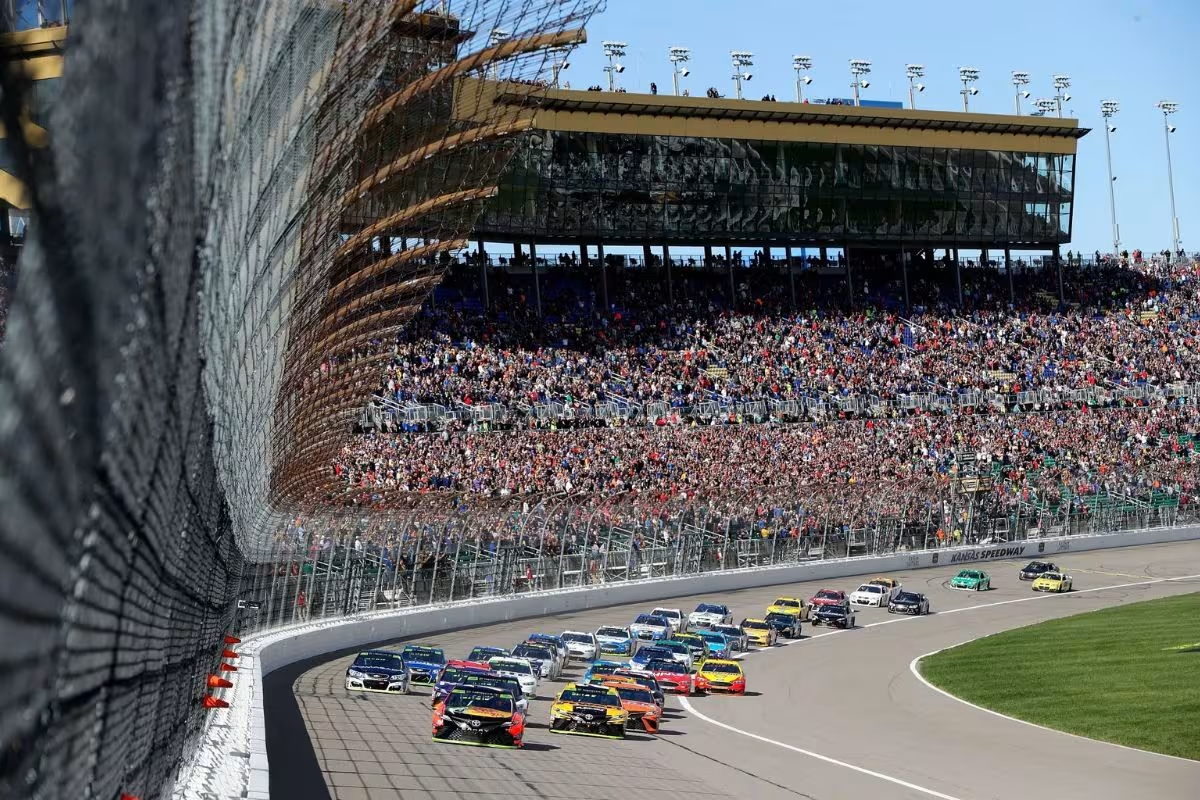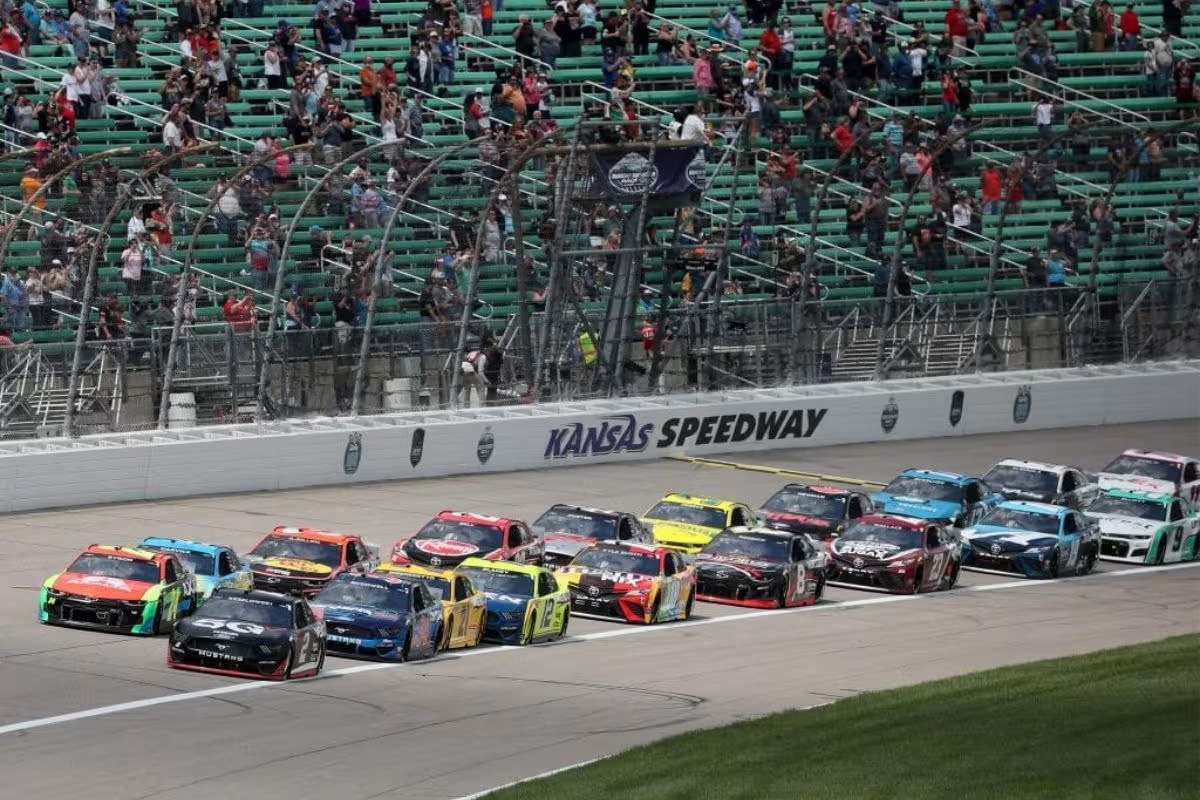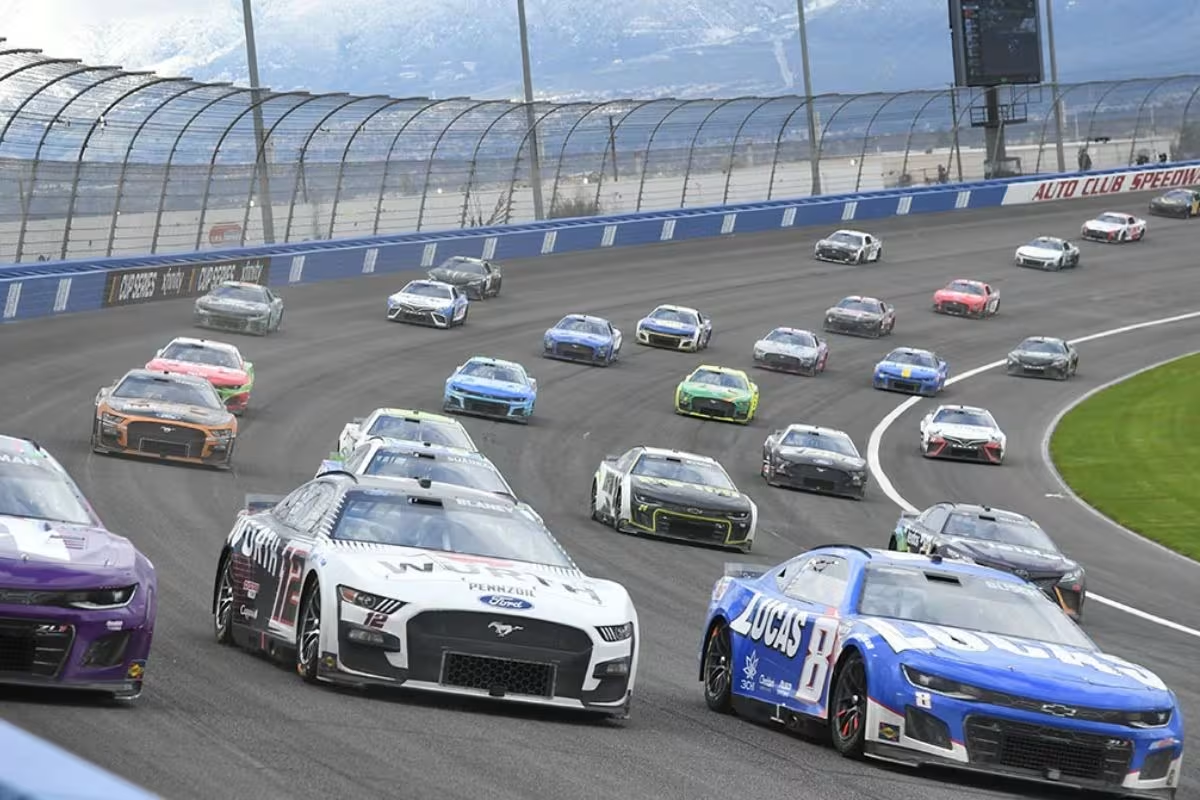NASCAR Round of 12 Qualified Drivers: As the NASCAR Cup Series Round of 12 converges on Kansas Speedway, the stakes are undeniably high for the qualified drivers, each of whom approaches this pivotal race with varying degrees of historical success and current momentum. Kyle Larson stands out with an exceptional average finish, while Denny Hamlin’s consistency positions him as a formidable contender. However, the pressure mounts for drivers like Ryan Blaney, who must confront their performance inconsistencies head-on. With track conditions constantly evolving and tactical choices looming large, the outcome remains uncertain, prompting an examination of which drivers are poised to thrive or falter under pressure.
Key Highlights
- Historical performance indicates Kyle Larson, with an average finish of 3.4, is a strong contender for success at Kansas Speedway.
- Christopher Bell’s strong qualifying skills could position him favorably for a top finish, impacting playoff standings.
- Tire management and pit strategies will be crucial, as track conditions evolve during the race at Kansas.
- Denny Hamlin’s five top-fives in the Next Gen era suggest he is a consistent threat in this critical playoff race.
- A win at Kansas could secure a driver’s advancement, making consistency essential for playoff contenders.
Overview of the NASCAR Cup Series Playoffs
The NASCAR Cup Series Playoffs consistently captivate fans and participants alike, showcasing the pinnacle of stock car racing competition. This elite tournament format, designed to intensify the drama and stakes of the season, involves a rigorous elimination structure that ultimately narrows the field from an initial 16 drivers down to four contenders vying for the championship.
The Playoffs are divided into distinct rounds, each characterized by a combination of performance, tactics, and resilience. The Round of 16 culminates in a high-octane showdown, with events such as the Bass Pro Shops Night Race at Bristol Motor Speedway serving as critical proving grounds. Here, drivers not only seek to secure their positions but also to instill psychological advantages over their competitors.
As seen in recent races, Kyle Larson’s emphatic victory at Bristol demonstrates the unpredictability and fierce competition inherent in this format, where one standout performance can reshape the narrative of the playoffs.
Following the Round of 16, the points are reset, reflecting the ongoing pressure and urgency as the remaining 12 drivers shift into the Round of 12. This reset doesn’t merely serve as a fresh start; it highlights the importance of consistency and adaptability in the face of shifting circumstances.
Teams must hone their strategies and improve upon past performances, making the playoffs a true test of skill, teamwork, and mental fortitude. As the series progresses, each race becomes a critical chess match, with drivers tactically maneuvering the complexities of the competition to secure their paths to the ultimate prize.
Importance of Performance at Kansas Speedway
At Kansas Speedway, performance takes on heightened significance as drivers shift into the Round of 12 in the NASCAR Cup Series Playoffs. This pivotal race not only sets the tone for the remainder of the playoffs but also serves as a critical indicator of each driver’s capabilities under pressure. For fans, be it through sports betting or friendly rivalries, understanding how their favorite drivers have historically performed at Kansas can provide an edge in predictions and discussions.
Performance at this track can be a harbinger of momentum, as drivers who excel here often carry that confidence into subsequent races. As the excitement intensifies, understanding these nuances not only improves the viewing experience but also enriches one’s appreciation for the skill and strategy involved in the NASCAR playoffs.
Historical Context of Kansas Speedway Races
Evolving dynamics characterize the historical context of races at Kansas Speedway, particularly with the advent of the Next Gen car in 2022. This crucial shift has recalibrated the competitive landscape, challenging preconceived notions about driver performance and vehicle capabilities at this 1.5-mile intermediate track.
In its 37 NASCAR Cup Series races since 2001, Kansas Speedway has experienced transformations that render prior data less relevant in the current context.
The introduction of the Next Gen car has led to several notable changes:
- Improved Aerodynamics: The new design features enhanced aerodynamics, allowing for more competitive racing and altering the tactics teams employ.
- Tire Management: Drivers now face different tire wear patterns, which greatly impacts pit strategies and overall race outcomes.
- Driver Adaptation: The learning curve for drivers has shifted, with previous experiences in standard cars becoming less predictive of future performance.
As we analyze races post-2022, it becomes increasingly clear that historical performance at Kansas Speedway must be reassessed in consideration of these advancements.
The five most recent races serve as a more accurate barometer of current driver capabilities and team tactics. Consequently, when predicting outcomes for the upcoming race, one must focus on the dynamics introduced by the Next Gen car, as they will ultimately dictate the trajectories of the twelve drivers vying for supremacy.
This nuanced understanding not only enriches race day analysis but also raises the tactical discourse surrounding NASCAR’s evolving narrative.
Performance of Individual Drivers
Performance metrics for individual drivers at Kansas Speedway reveal a compelling narrative that intertwines skill, strategy, and adaptability in the face of the Next Gen car‘s influence.
Leading the charge is Kyle Larson, whose impressive average finish of 3.4 since 2022 and 276 laps led over the last five races position him as a top contender. His ability to consistently navigate the intricacies of this track emphasizes his mastery of the Next Gen car.
Christopher Bell follows closely, with a solid average finish of 11.6 and three poles, despite a single DNF. His qualifying skill sets a foundation for potential success, while Tyler Reddick seeks redemption after recent challenges, using his victory at Kansas last year to reclaim momentum.
Conversely, William Byron must boost his qualifying performance to counteract his recent struggles. Ryan Blaney embodies consistency, albeit with a mediocre record that sees him finishing around 12th, a statistic he needs to improve upon.
Denny Hamlin‘s historical strength at Kansas, reflected in five top-fives since the Next Gen era, makes him a notable threat. As Kevin Harvick prepares for his final outing at Kansas, he aims to channel nostalgia despite an average finish of 13.8.
Meanwhile, drivers like Brad Keselowski and Bubba Wallace exhibit the potential for unpredictability, while Martin Truex Jr. and Chris Buescher look to capitalize on opportunities for top-10 finishes.
Kansas Speedway: A Critical Showdown
Kansas Speedway stands as a fundamental battleground for drivers in the Round of 12, serving not only as a test of speed and skill but also as a key juncture in the NASCAR playoffs. The stakes are heightened, as each driver not only aims for victory but also seeks to solidify their position in the championship race.
With a storied history at this venue, the dynamics of the race will be influenced by strategy, tire management, and the intricacies of the track.
Three key factors will define the outcomes at Kansas Speedway:
- Driver Performance: Each competitor brings their unique narrative and skillset, making individual performance a notable variable. Historical data will play an essential role in predicting outcomes.
- Track Conditions: Kansas Speedway’s surface can change throughout the race, affecting grip and tire wear. Understanding how these conditions evolve will be imperative for teams to adjust their strategies in real-time.
- Pit Strategy: In a race where every moment counts, effective pit stops and timely calls regarding fuel and tires can separate the contenders from the pretenders. Teams must weigh risks carefully, balancing aggression with caution.
As fans and bettors alike scrutinize the race, the tension will be palpable. This key showdown not only illuminates the drivers’ talents but also highlights the unpredictable nature of NASCAR, where a single lap can redefine a season’s course.
News in Brief: NASCAR Round of 12 Qualified Drivers
The impending NASCAR Cup Series Round of 12 at Kansas Speedway promises to be a pivotal event, greatly impacting the playoff landscape. Drivers with a track record of strong performances, such as Kyle Larson and Denny Hamlin, hold a distinct advantage. Conversely, the need for consistency among competitors like Ryan Blaney highlights the unpredictable nature of motorsport. Ultimately, tactical decisions and adaptability to evolving track conditions will dictate which drivers successfully navigate this critical showdown and advance in the playoffs.
ALSO READ: NASCAR Driver Reveals Who’s the Hardest to Talk to in the Garage, and It’s Not Who You’d Expect



